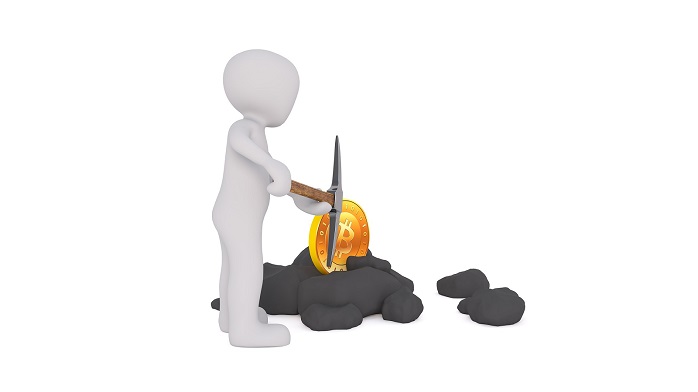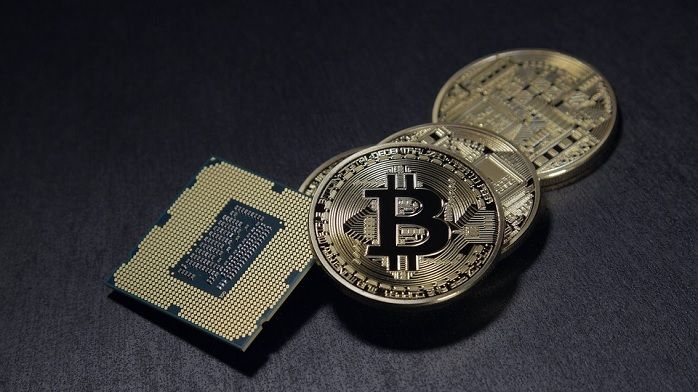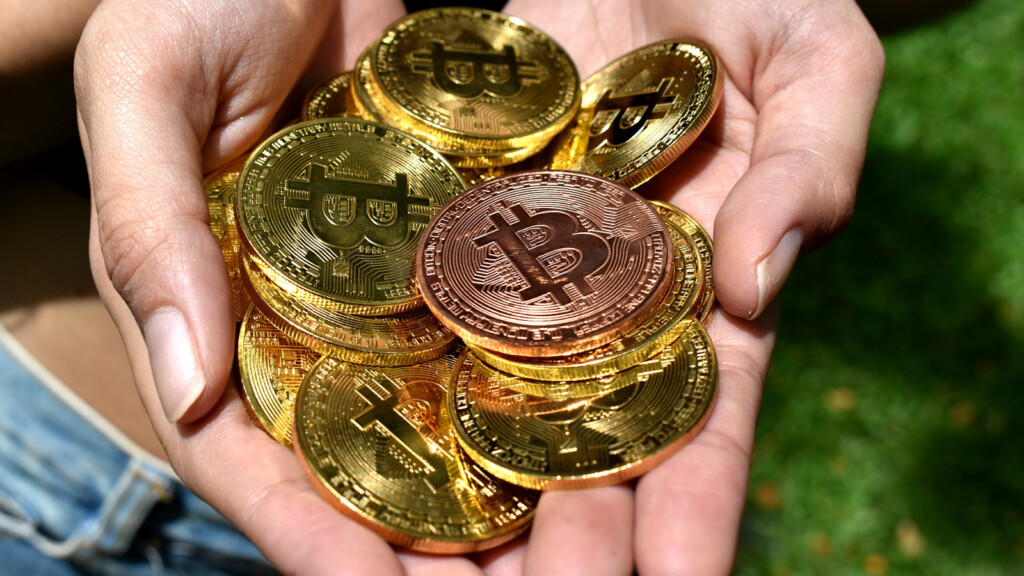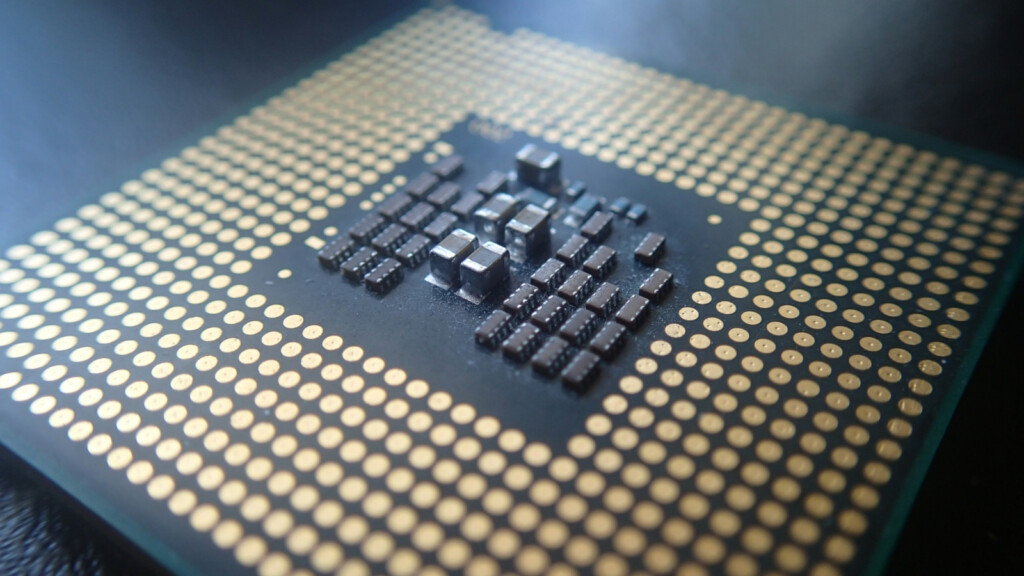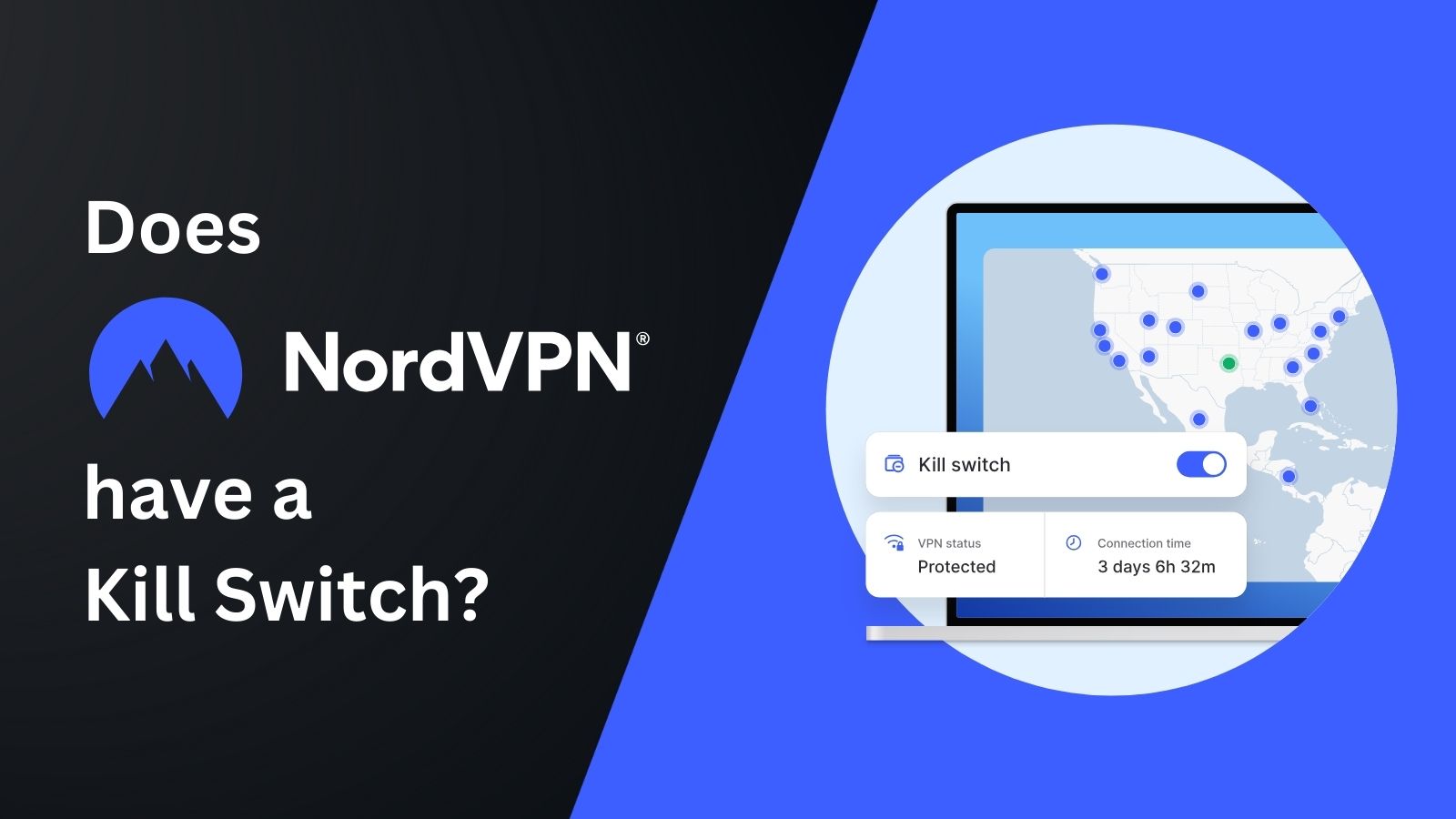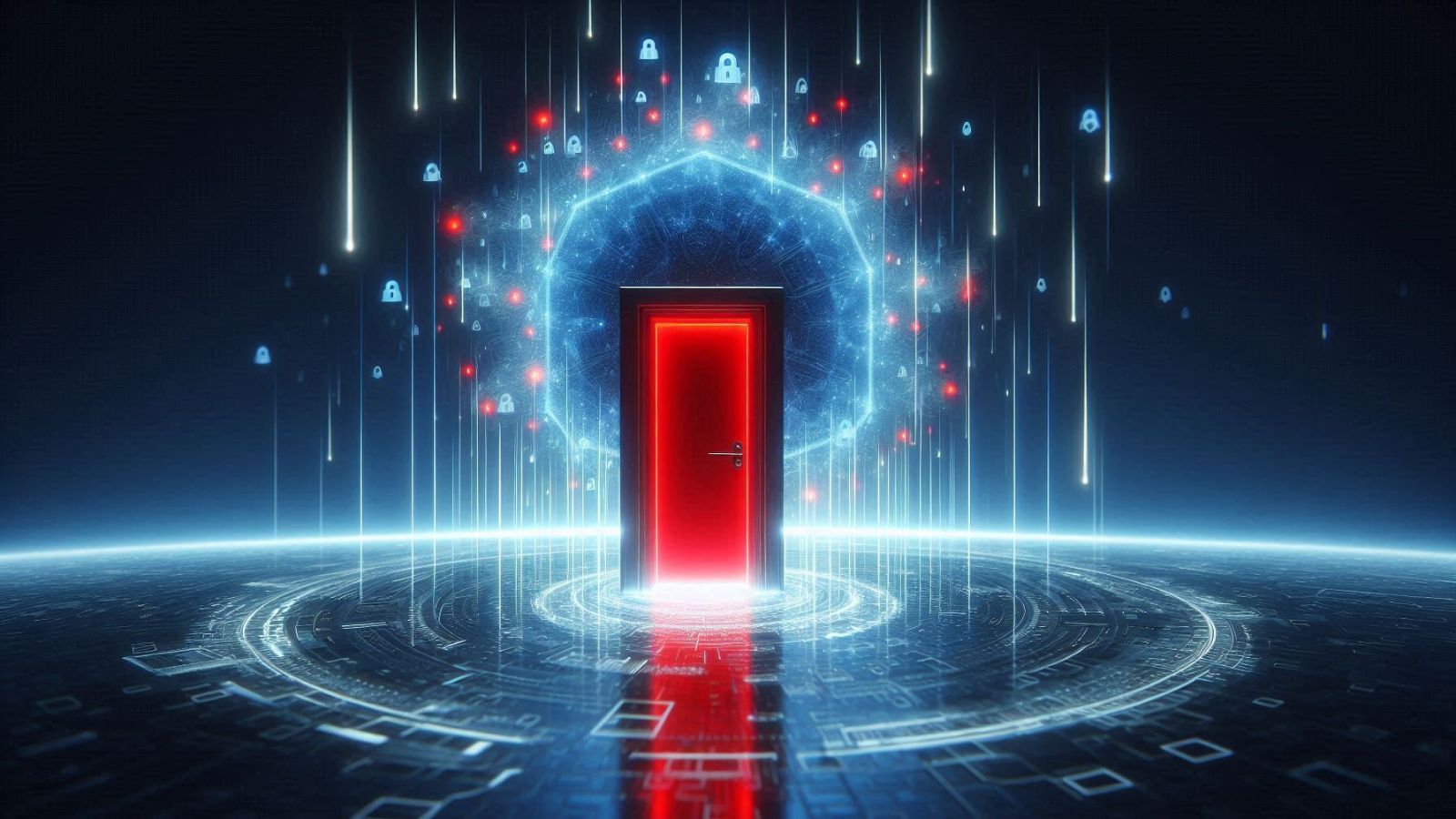
How Do You Mine Cryptocurrency?
You might have heard that people make Bitcoin by "mining" it. But, isn't cryptocurrency some sort of computer thing? Where are the mines? What does it even mean to "mine" a digital currency? Even for people with a keen interest in this new technology, the technical details can be pretty hard to understand. So to get a good grip on the subject of cryptocurrency in general and mining in particular, let's break it down into easy to digest components.
Unearthing Cryptocurrency
The idea of "mining" cryptocurrencies is actually very analogous to mining real resources, like gold and silver.
There is only so much gold locked away in the Earth. We dig it out of the easiest to reach places first, but as time goes by it becomes harder to reach new gold deposits. If the value of gold goes up, it may make the effort and expense of reaching those deposits worth it. If the value of gold goes down too much, the mines start to shut down.
That's a pretty simple concept to understand, but what does that have to do with mining cryptocurrency?
What Crypto Mining Actually Is
Cryptocurrencies use something called a "blockchain" to keep a decentralized record of every transaction made using the currency. At least that's how Bitcoin, the crypto pioneer, does things. New takes on the concept have their own unique ways of doing the thing, but I'm going to use Bitcoin as the base model here.
One of the big problems with a decentralized system like this, is who pays for the hosting and computation? After all, the blockchain has to be stored somewhere. In fact, it needs to be stored in thousands of independent places to work. On top of that, every transaction needs to be processed and verified. That requires a computer to do the work. No one is going to do this for free, so cryptocurrencies automatically pay those who provide these resources.
That's what crypto mining actually is. You provide the resources to actually drive the processes of the system. In return, you get a piece of the pie. In some cases being a miner even gives you voting rights when it comes to deciding what happens to a given blockchain as a whole.
What Miners Do
The core of a cryptocurrency is the blockchain. This is a complete, public ledger of every transaction made using the cryptocurrency. Transactions are added to this chain in blocks. In the case of Bitcoin, that block size is only 1 MB.
Before a block of transactions can be added to the chain, it has to be verified. Verifying a block of transactions is one part of what a miner does, in order to get the "block reward", which in the case of Bitcoin is a set amount of Bitcoin. However, verifying those transactions is computationally easy and millions of miners are verifying the same block. So how do you decide who gets the reward? That's the second, much larger part of mining. The miner has to solve a cryptographic puzzle. It has to guess, by brute force, a specific hexadecimal number. The odds of this guess varies over time and between currencies, but as I write this, Bitcoin mining has a difficulty of 1 in 13 trillion. That is, the chances of anyone particular guess by the miner being the right one is one in 13 trillion on average.
This means you want a system that can make as many guesses as possible, as quickly as possible. Since being first to solve the puzzle gets you the prize. So what "mining equipment" do people use to get to the prize first?
The Tools of the Trade
In a real mine, you need equipment. Diggers, drills, excavators and so on. Crypto mining is no different. You probably know that it's done with computers, but there's more to it than that. There are many types of mining rigs, from people who simply use their normal desktop computer, to massive industrial-grade cryptocurrency mining operations.
In principle, there are three types of hardware that can be used for mining. We'll go over each one in turn and talk about the pros and cons of each one.
CPU Mining
The CPU or Central Processing Unit is the heart of your computer. At the time of writing, almost all desktop and laptop computers use a fundamental design that originated with the Intel 8086 CPU in the late 1970s.
The CPU does all the general-purpose number crunching on a computer, so it's also capable of doing the calculations needed for mining. In the early days of Bitcoin, you could only use CPUs to do this work, but that's no longer the case.
In fact, CPUs aren't fast enough to compete in modern mining, so no one uses them. At least not if they want to make money instead of losing it. This is mainly because CPUs are very good at running a few threads of complex calculations very quickly, but that doesn't translate into the millions of simpler calculations you need to do in parallel for mining.
GPU Mining
The GPU or Graphics Processing Unit is a specialized processor that's used to render graphics. Usually 3D graphics. All modern computers need some sort of GPU, with mid- to low- end CPUs including a basic GPU in the same chip package. Modern GPUs consist of large numbers of small, simple processors. Numbering in the hundreds to the thousands on high-end products.
It turns out that these processors aren't just good for processing graphics calculations. There are plenty of non-graphics applications they are amazing at solving. It just so happens that cryptocurrency mining is one of these. GPUs are so good at mining currency quickly and economically, that for a while they caused a shortage of chips. Gamers and scientists were not happy with the spike in GPU prices and lack of supply!
GPU mining is no longer all that profitable. In fact, as you read this it may even be well and truly dead. The difficulty of mining is always increasing, which is one part of why this happens, but the main reason GPU mining is falling out of favor comes down to the rise of specialized hardware mining equipment known as ASICs. Then again, the ASIC might be taken down by GPUs again. I'll explain that in just a moment.
ASIC Mining
An ASIC is an Application-Specific Integrated Circuit. In other words, these are processors that are specifically designed mine currency. They don't do anything else. As such they can get the maximum amount of "guesses" done in a given second for the lowest energy cost.
You need two things in order to make cryptocurrency mining profitable. First of all, you need a sufficient "hash" rate. A "hash" is the form each guess to the cryptographic problem takes. The more hashes you can do in a second, the faster you are likely to hit upon the right number and win the race.
The second important thing you need is extremely good energy efficiency. If the cost of the electricity your mining efforts use is more than the money you are bringing in, it's all pointless!
ASICs essentially solve both of these problems. They are dedicated to only generating hashes for mining, so every bit of silicon works towards that end. They also do it while using relatively little energy.
CPUs and GPUs are not purpose-built for mining, so they aren't as fast as possible nor as energy efficient. That doesn't mean ASICs don't have drawbacks!
ASICs are, as the name says, specific to ONE application. If your ASIC mines Bitcoin, that's ALL it will mine. Once newer models come out, you either have to replace your ASICs or add new ones to ensure your hash rate is enough of the total hash rate on the network to make money.
In that sense, GPUs might again become favorable, because you can switch to whichever currency is worth mining at a whim. Future GPUs may also become more powerful at a rate that exceeds how quickly the difficulty of a given currency goes up.
Mining in a Pool
While ASICs have come to dominate mining, there is still a way for regular people who have a decent GPU to be part of a successful mining operation. This is possible thanks to a practice where various people all work on contributing hashes to the same block. When the currency is then awarded, the takings are split between the contributors. According to some sort of system that determines who gets how much of the pot.
Mining pools are the only way you'll make a bit of money using your normal PC with its GPU. It might even be the best way to use your custom mining rig, even if it consists of ASICs. The reason for this is that pooling everyone's processing power together with makes it almost certain that you'll get some money. Whereas your lone computer has a zero chance of making any money. Your machine still does the same amount of work, but one method makes money and the other doesn't.
Is Mining Worth It?
If you just want to try some mining out as a way to learn or just for fun, there's no harm in it. However, if you want to mine cryptocurrency as a way to make money, there are plenty of pitfalls. You can read about them in more detail in our article on mining risks, but the chief problem is that mining isn't all that profitable. The only truly profitable mines are massive operations running on cheap electricity, with hundreds or thousands of ASICs. even those miners could go out of business in a day, as a currency crashes or more powerful ASICs render their whole farm obsolete.
This is probably why most people who make money from cryptocurrencies like Bitcoin do it through speculation. They buy low and sell high, trying to predict when the right time to do either is. In turn this contributes to the unstable market value of these currencies.
Are you interested in mining? Let us know down below in the comments. Lastly, we’d like to ask you to share this article online. And don’t forget that you can follow TechNadu on Facebook and Twitter. Thanks!

